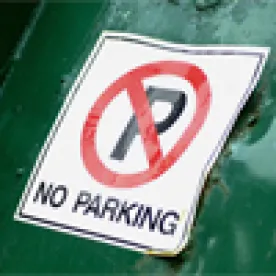December 10, 2018 saw significant activity with respect to Section 512(a)(7) of the Internal Revenue Code (the “Code”), which requires tax-exempt employers to increase their unrelated business taxable income (“UBTI”) by amounts paid or incurred for qualified transportation fringe benefits provided to employees, including the provision of parking and public transportation benefits. Section 512(a)(7) was enacted pursuant to the 2017 U.S. tax legislation known as the “Tax Cuts and Jobs Act,” and caused concern amongst tax-exempt organizations because of the prospect of increased tax liability, the lack of clarity for determining the taxable amount of such benefits, and the additional administrative burdens triggered for certain organizations.
Guidance issued by the Internal Revenue Service (“IRS”) and a new New York State law, all as of December 10, 2018, may help alleviate some of these concerns.
Notice 2018-99: IRS Issues Guidance Regarding Parking Provided by Tax-Exempt Organizations
On December 10, 2018, the IRS released Notice 2018-99 and Notice 2018-100, which together provide guidance and relief for tax-exempt organizations with respect to determining the amount of UBTI attributable to qualified parking expenses and other qualified transportation fringe benefits. Pursuant to Section 512(a)(7), tax-exempt employers are required to increase their UBTI by amounts paid or incurred for qualified transportation fringe benefits provided to employees. The tax imposed by Section 512(a)(7) applies whether the tax-exempt employer pays for these benefits at its own expense or allows employees to deduct money from their compensation to pay for the benefits on a pre-tax basis.
Notice 2018-99 provides interim guidance for determining the amount of qualified parking expenses subject to UBTI. The Notice generally provides that organizations may use “any reasonable method” to calculate their UBTI with respect to such parking expenses. However, the Notice also includes a specific safe harbor that tax-exempt employers may use until further guidance is issued to calculate the amount of parking expenses that should be included in UBTI, as well as several examples that illustrate use of this safe harbor. For purposes of these rules, the Notice provides that tax-exempt employers may aggregate multiple parking facilities within the same geographic location (i.e., in the same city). The safe harbor delineates four steps:
- First, a tax-exempt organization would calculate its expenses related to parking explicitly (or effectively) reserved for employees (whether it is on property the employer owns or leases, at or near the employer’s business, or at a location from which the employee commutes to work).
- Next, the tax-exempt organization would identify the remaining parking spots in the facility that are not explicitly reserved for employees, and determine whether their “primary use” is for the general public. To the extent more than 50% of actual or estimated use of parking spots in the parking facility during typical business hours is for use by the general public, then the “primary use” of the parking facility may be considered to be for the general public, and accordingly, the amount of parking expenses allocated to these non-reserved parking spaces will not be included as UBTI.
- Third, to the extent the “primary use” of the parking facility is not for the general public (i.e., more than 50% of the actual or estimated use of the facility is for employees, even if spaces are not explicitly reserved), then the tax-exempt organization would identify any such spots that are specifically reserved for non-employee or general public use. Amounts allocable to these spots would not be included as UBTI.
- Finally, if there are any remaining parking spots not addressed in steps 1-3, the tax-exempt organization would reasonably determine the typical use of those remaining spots, based on actual or estimated usage, and amounts allocable to spots that are typically used by employees would be included as UBTI.
Pursuant to the Notice, tax-exempt organizations are permitted to reduce their UBTI with respect to parking arrangements by reducing the number of explicitly reserved employee parking spots at any time on or prior to March 31, 2019, with retroactive effect to January 1, 2018.
The Notice further provides that UBTI generated under Section 512(a)(7) is not considered a separate unrelated trade or business for purposes of the rules requiring separate computation of UBTI for each separate unrelated trade or business under Section 512(a)(6). This position was previously stated in Notice 2018-67, which was issued in August of 2018.
Notice 2018-100: IRS Provides Penalty Relief for Tax-Exempt Organizations with Respect to Section 512(a)(7)
In coordination with Notice 2018-99, and also on December 10, 2018, the IRS issued Notice 2018-100, which waives tax penalties for tax-exempt organizations that failed to make estimated income tax payments, to the extent the underpayment was attributable to the changes to the qualified transportation fringe benefit rules in Section 512(a)(7). Notably, however, this relief only applies to tax-exempt organizations that were not required to file Form 990-T for the previous taxable year.
New York Law Declines to Tax Tax-Exempt Organizations for Qualified Transportation Fringe Benefits
Relatedly, New York Governor Andrew Cuomo signed a bill on December 10, 2018 that decouples the New York State tax code from the changes made to the federal UBTI rules. This move exempts amounts paid or incurred by tax-exempt organizations for commuter benefits from an additional 9% New York State tax.
***
Finally, there continues to be momentum in Congress to amend or repeal Section 512(a)(7). On December 10, 2018, Chairman of the House Ways and Means Committee, Kevin Brady (R-TX) introduced an amendment to H.R. 88 that would repeal Section 512(a)(7), retroactive to the date of enactment. Other bills proposed by different members of Congress have contained similar provisions.




 />i
/>i

